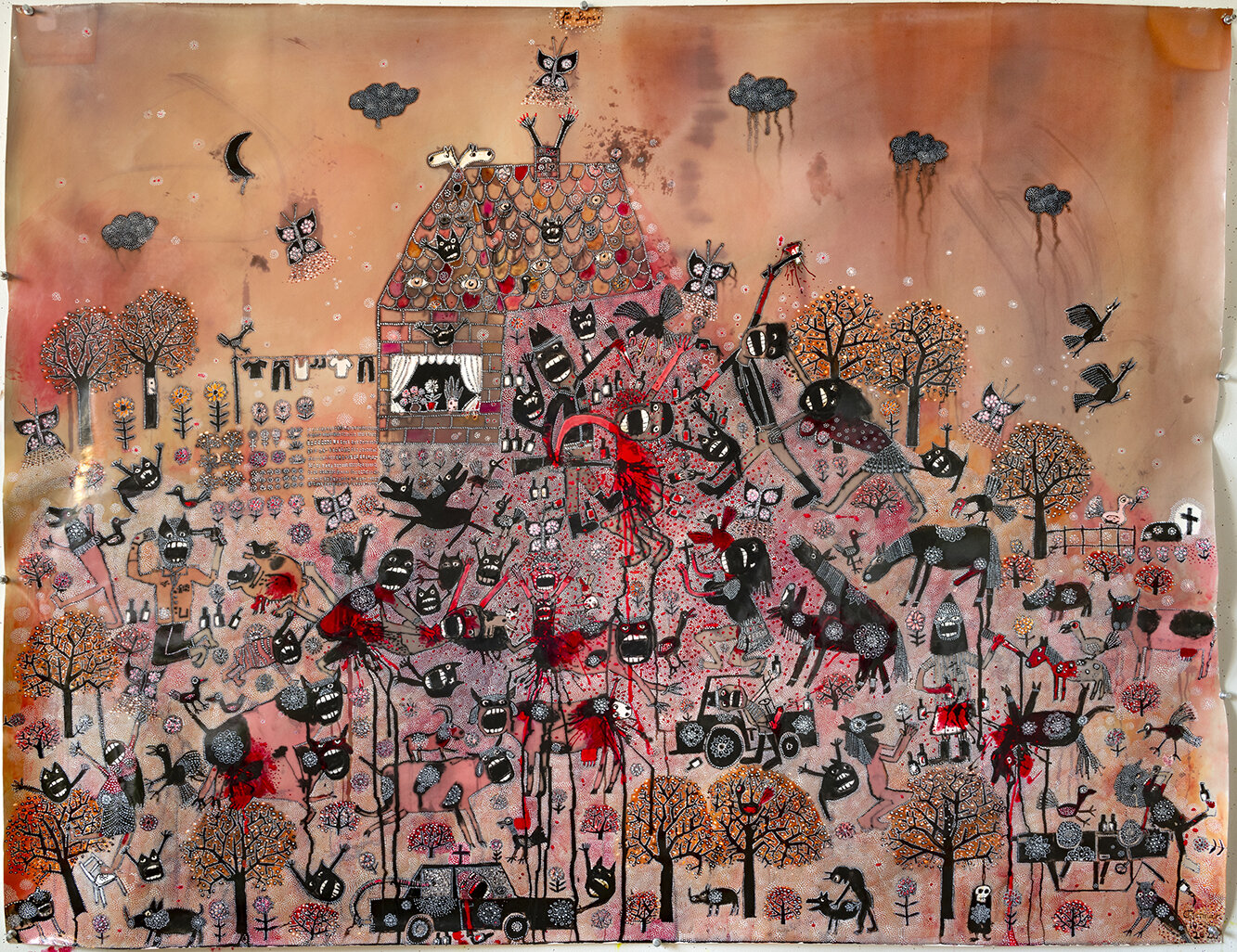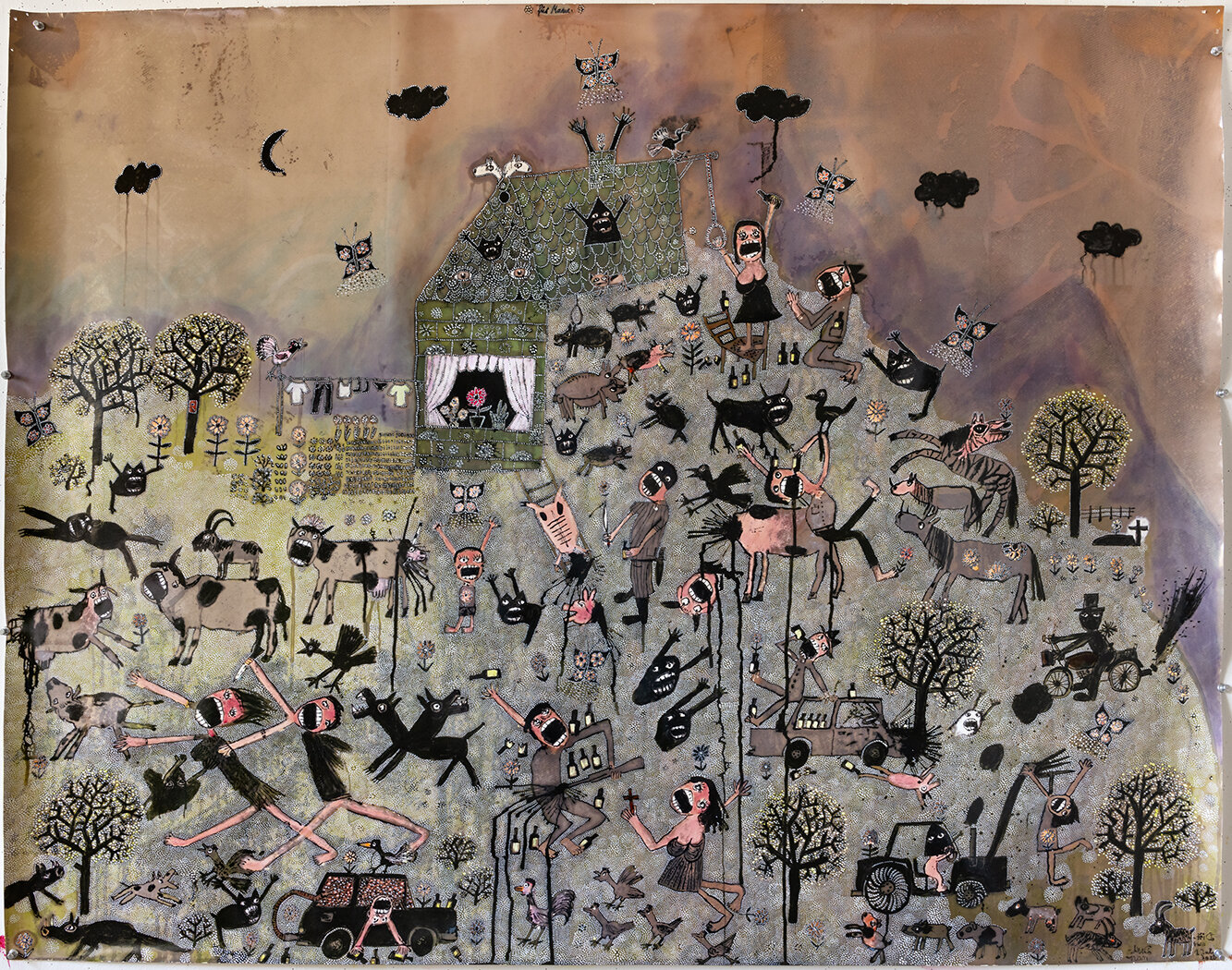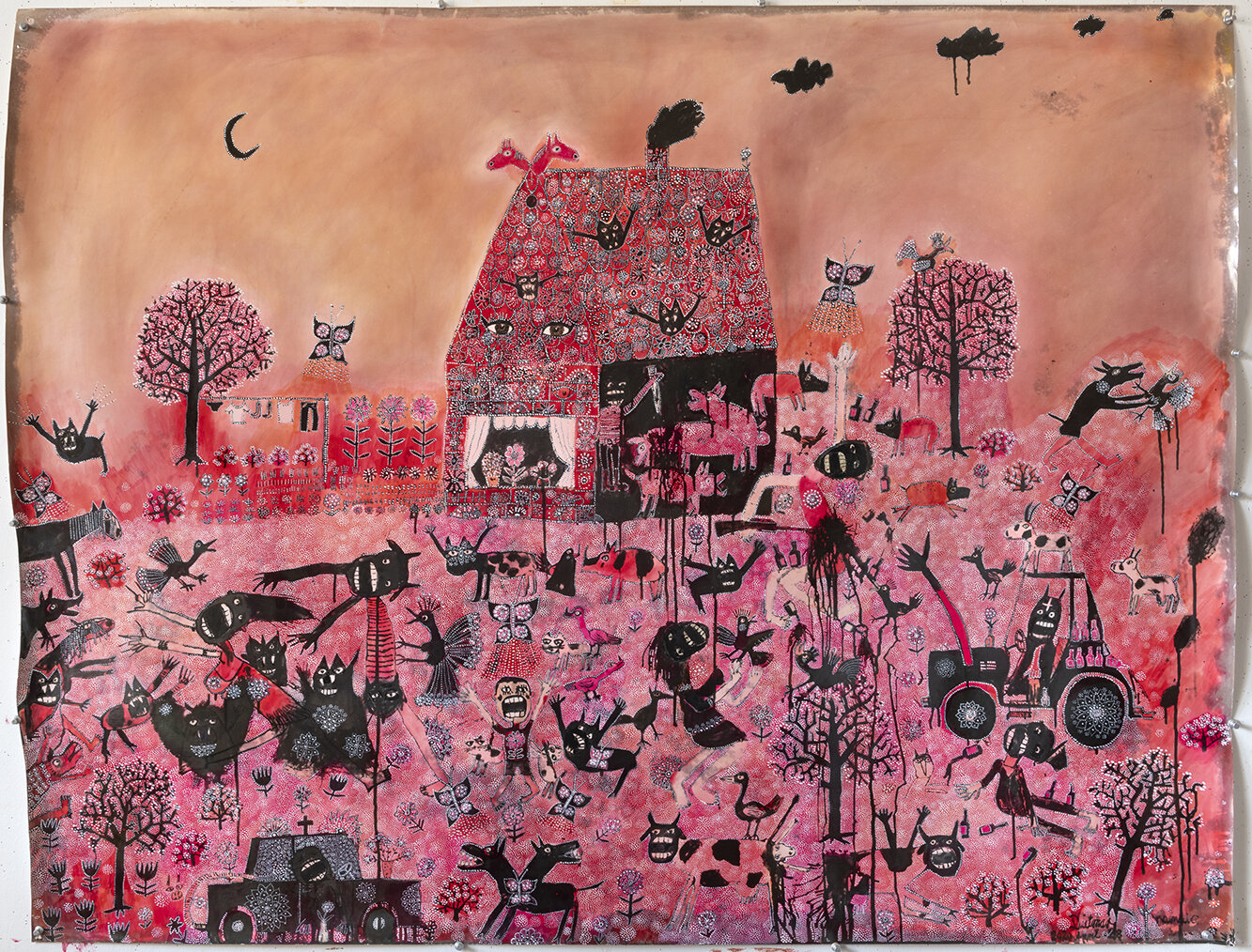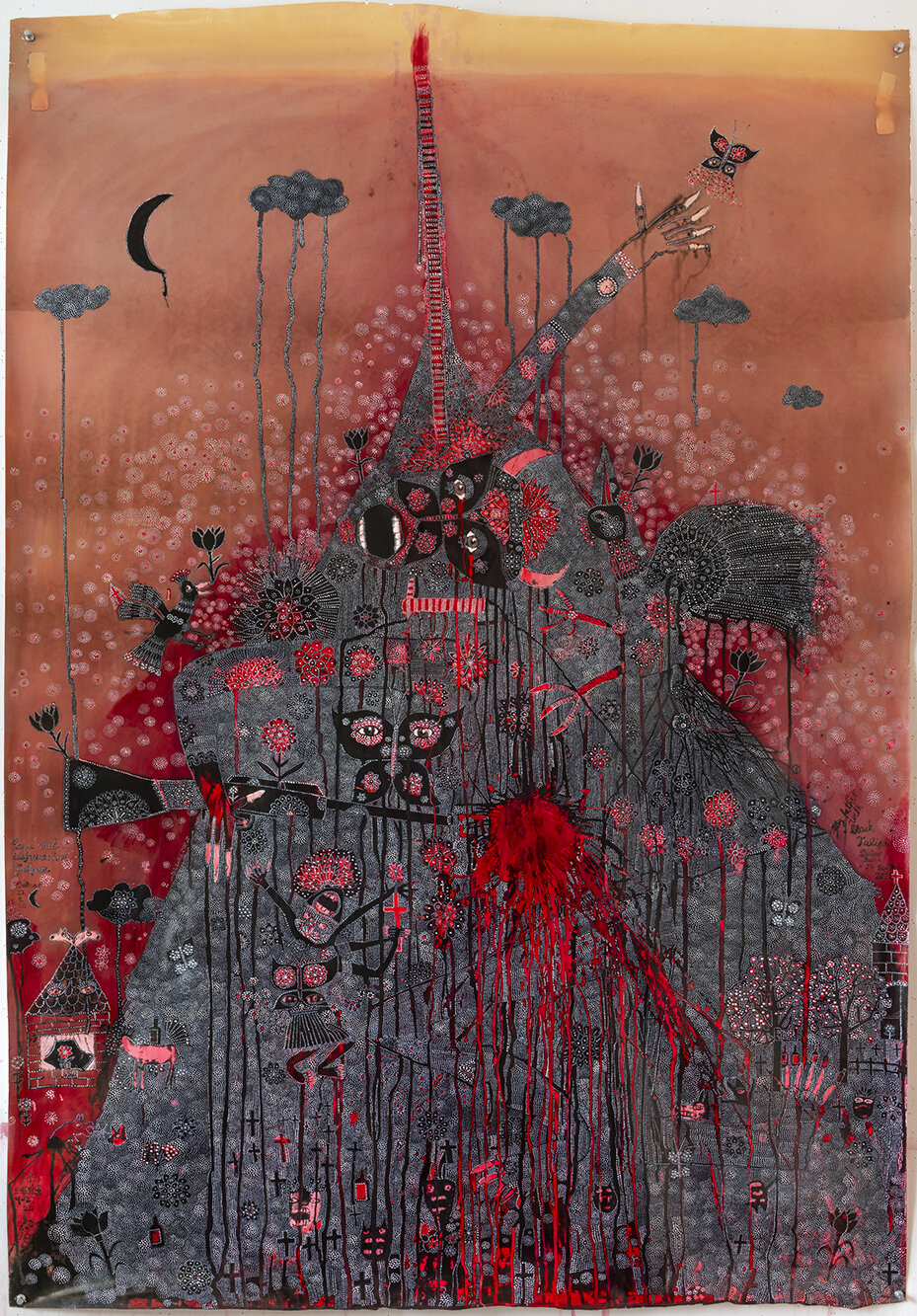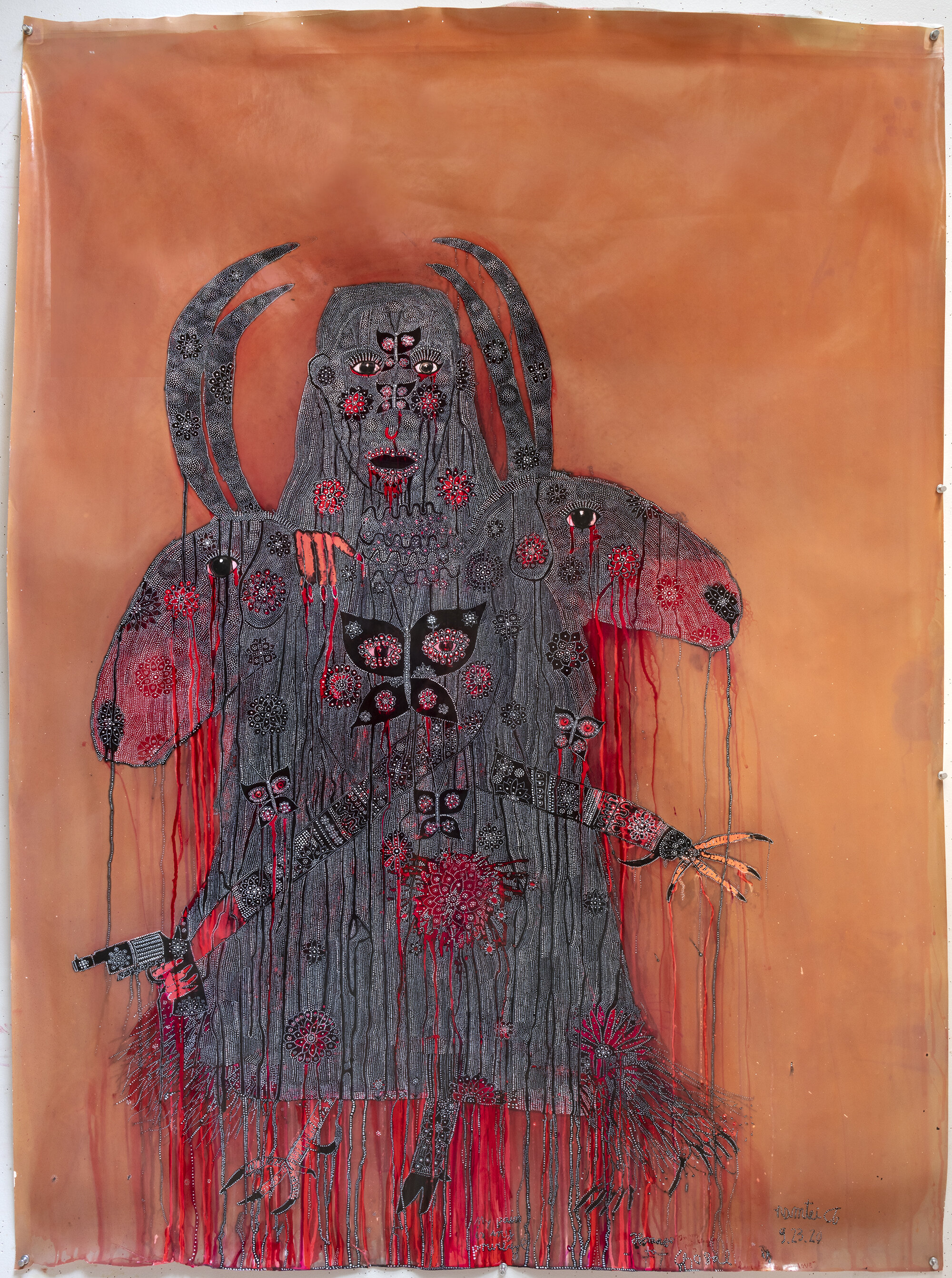Today I Wanted To Die Again
By Micaela Bahn
Part of photography’s power is its enduring ability to beguile those who know the form most intimately. Of all technical artforms, its rules seem most ready to be broken, and this is what makes the photograph ceaselessly exciting—the fact that Man Ray’s rayographs, Jerry Uelsmann’s darkroom effects, and Walker Evans’s documentary-style images can all fall under the same medium.
The images in Today I wanted to die again contain that quality of inscrutability. At first glance, Dietmar Busse’s works do not quite read as what we commonly understand as photography. They contain shrouded figures, dripping dye, and are stylistically harmonious with outsider art. The catch is that the images are based entirely on traditional darkroom photography; they simply lack a negative. Today I wanted to die again, Busse’s second solo exhibition with the Fierman Gallery, represents a radical departure from the expected.
Busse challenges photography’s immediacy in his image-less photographs, which are steeped in memory and histories of trauma. Point and shoot photographs linger on or recreate a moment; the image may be referential to a continuum of time, but ultimately it can only appropriate what is immediately present. The abstraction permitted by Busse’s darkroom photography bends time in a mode similar to the way memory functions: moments and figures overlap, contort, and become muddled.
Memory can also be full of distractions. The ornamented natural world in “Accidents in Paradise #7” initially delights the senses with shades of rosy pink and dot work like beaded jewelry. However, flowers and animal-like creatures quickly become background noise as you notice the childlike renderings of humans, their mouths opened wide as though screaming. The terrifying figures hold guns or knives, and red-black ink drips down the photographic paper where their violence meets flesh.
In another phantasmagoric image, “My father with black tulips,” brutality is more readily apparent. Busse does not shy away from the taboo subject of death and instead asks his viewer to join him in its interrogation. A splash of red ink drips down the body of a mountainous creature that has shot itself. If the creature is Busse’s father, this rendering contains and builds upon a world of ache. At the bottom of the mountain, a scattering of small crosses calls to mind the image of a graveyard. At the top, a flaming ladder rises from the creature’s peak, and its arm reaches up, clawing into a moonlit sky. The image includes symbols revisited throughout the series—ornate flowers, butterflies, a human-like house, and decorated birds cascade into the landscape and fold beauty into the disorder.
Repeated references are common in the series. “My father in a cage” features another man with the gun pointed at himself and a similar moonlit sky. “Accidents in paradise #9” resembles the composition of #7, but it is darker both in content and color, and its ink runs longer down the page. As with memory, the artist revisits these moments and symbols repeatedly, turning them in new ways to catch the light.
Busse’s emotions and impressions of childhood in West Germany during the 1960s and 70s provide his narrative backdrop. The methods used to create this new body of work are far less straightforward. The artist ostensibly ruins the photo paper by immediately exposing it to light. Using a paintbrush, he then applies developer to its surface and creates an initial dark stained image as the chemical reacts to the paper. Once this initial image is fixed and dried, he uses photographic bleaches, inks, and dyes to build out the scene at hand. Busse tugged at the photographic medium’s bounds through his previous work with altered silver gelatin prints, though these images frequently nodded toward classic styles. The new exhibition at the Fierman Gallery pushes representation’s potential even further and liberates the photograph from any semblance of static memory.
Today I wanted to die again is on view through December 13th at the Fierman Gallery.



